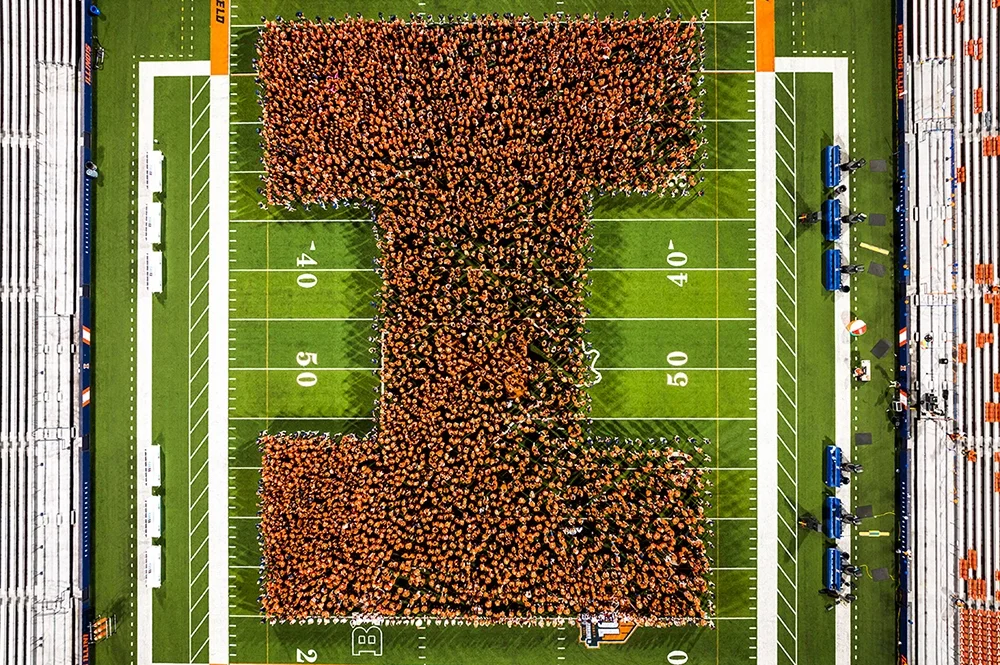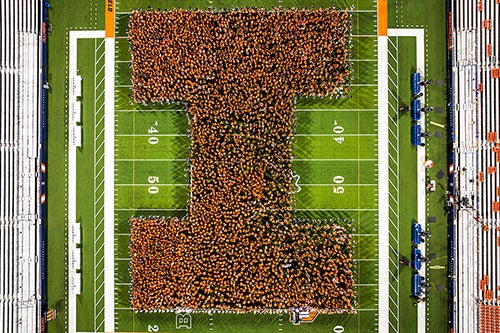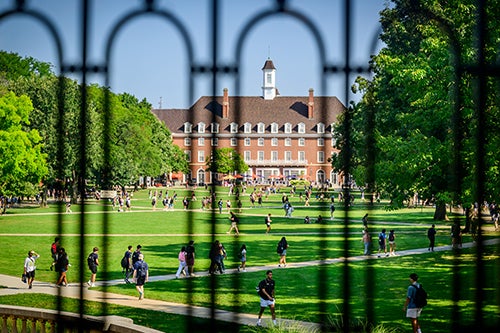

The University of Illinois Urbana-Champaign has welcomed a record-breaking class for the fall 2024 semester. With a freshman enrollment of 9,008, the new class brings record total student enrollment at 59,238, including on-campus and online students. This total includes 37,140 undergraduates and also a record number of 20,765 graduate students.
The new class includes 2,656 freshmen students in the College of LAS, which is the largest of any college on campus. It’s followed by the Grainger College of Engineering at 2,454.
The new first-year students were joined by 654 students who transferred to LAS this fall from other universities. Total undergraduate enrollment in the College of LAS stands at 12,760, with graduate student enrollment standing at 2,707.
“A hallmark of our great university is excellence at scale, and we are delivering on that statement now more than ever,” said Chancellor Robert J. Jones. “We have an impressive track record of not only enrolling students, but also ensuring they are making progress, graduating and going on to careers or graduate programs. We are committed to making sure that continues to be our reality.”
The freshman class has a strong academic profile. The average ACT was 32.1 (31.5 in 2023) and the average SAT was 1440 (1418 in 2023). ACT and SAT scores continued to be optional this year, with approximately 51% of enrolling new students submitting scores.
This year’s new freshmen include 6,429 students from Illinois, comprising 71% of the class. They represent 85 out of 102 counties throughout the state. The freshman class also includes 1,346 students from 43 other U.S. states and territories and 1,233 enrolled international students from 48 countries. The top home countries for incoming freshman international students continue to be China, India and South Korea.

In the College of LAS, 73.6% of first-year students came from Illinois. Another 11.4% came from other U.S. states, and 15.1% are international.
More than 1 in 5 incoming students is a first-generation college student, making up 22% of the freshman class. In the College of LAS, that number is 24.4%. And the representation of students who qualified for a financial hardship fee waiver stayed consistent at nearly 1 in 5.
“Illinois is a special place to learn, grow, explore and succeed — a place full of opportunity,” said Provost John Coleman. “We continue to attract the most talented, driven students. As we welcome our newest class to the Illinois community, we know our students bring unique lived experiences, goals and perspectives. We are committed to providing an environment where all can find personal and academic success.”
The freshman class also includes 22% of students from underrepresented groups. This is about 1 in 5 students. This year if students self-identify as multiple races, each of those choices will be represented. In the College of LAS, about 22.5% of first-year students came from underrepresented groups.
“As we welcome our largest class in university history, we are at a point of transition for our university,” said Kevin Jackson, vice provost for undergraduate education. “Our new approach is more representative of a student’s entire identity and is a better reflection of the world in which we live.”
This year 1,434 new students self-identify as Hispanic (up from 1,251 in 2023). Of the new freshmen, 594 self-identify as African American (589 in 2023), 122 self-identify as Native American/Alaska Native (106 in 2023), and 28 self-identify as Native Hawaiian/Pacific Islander (20 in 2023). For students who selected a single racial identity, 443 identified as African American (449 in 2023), 3 identified as Native American/Alaska Native in both 2024 and 2023, and 2 identified as Native Hawaiian/Pacific Islander in both 2024 and 2023.
This year’s male-to-female ratio is 50.4% male and 49.6% female, according to the available data. In this admissions cycle, there were 73,742 applications, an increase from 67,398 last year.
The university also welcomed 1,547 transfer students. Of those students, 61% transferred from Illinois community colleges. Students transferring to the state of Illinois from out-of-state four-year universities increased slightly this year from 269 to 306. First-generation students make up 27% of all transfer students this year. The new transfer class includes 24% from an underrepresented group, an increase from 19% last year.
The university’s preliminary undergraduate retention rate is 95%, compared to the national average of 78% for all public universities. The six-year graduation rate is 85%, compared to the national average of 64% for all public universities. And 91% of graduates found a job or enrolled in a graduate or volunteer program within six months of graduation.
The university also welcomed a record number of 7,425 new graduate students, an 18% increase over last year. Enrollment in doctoral programs is up 19%, and enrollment in master’s programs is also up 19%. Illinois enrolls 41% of its graduate students in fully online programs and, over the past several years, has seen an increasing number of online and other non-traditional learners. The Graduate College enrolled its first class of certificate learners in fall 2022. Now, in the third year, there has been a 55% increase in new certificate students. Overall, 65.5% of graduate students are enrolled in master's programs, 30.5% in doctoral studies and 4% in certificate and non-degree programs.
“The Graduate College provides a diverse array of educational pathways,” said Wojtek Chodzko-Zajko, dean of the Graduate College. “We offer traditional doctoral programs that not only drive our institution’s innovative research and scholarship, but also cultivate the next generation of thought leaders and innovators who will impact society. Simultaneously, we’ve developed state-of-the-art professional, online and certificate programs that address the evolving needs of contemporary learners.”
“We are also pleased to see continued growth in the diversity of our graduate community,” Chodzko-Zajko notes.
New enrollments from underrepresented populations increased by 19%. This includes a 25% increase in Hispanic student enrollment and a 13% increase in African American student enrollment. Graduate students from more than 123 countries make up 42% of the total graduate enrollment, contributing a wide array of global perspectives to Illinois.